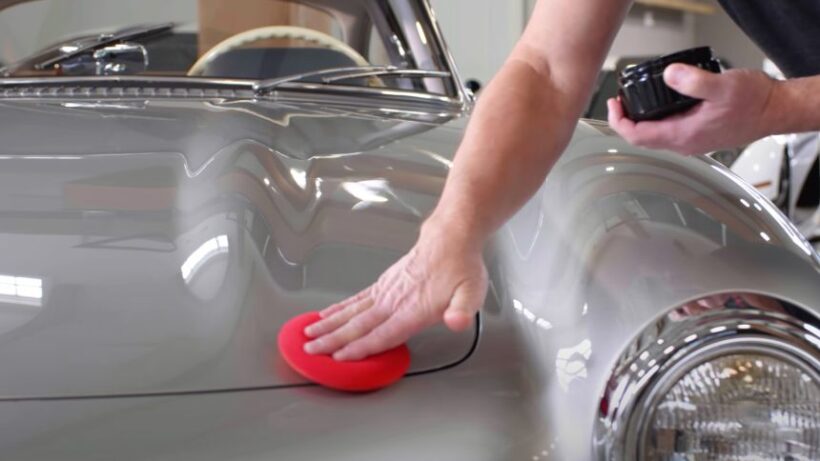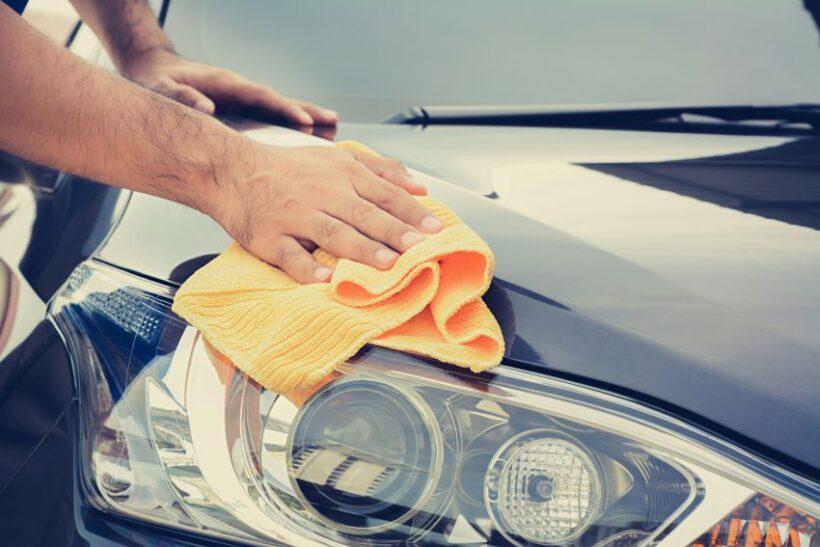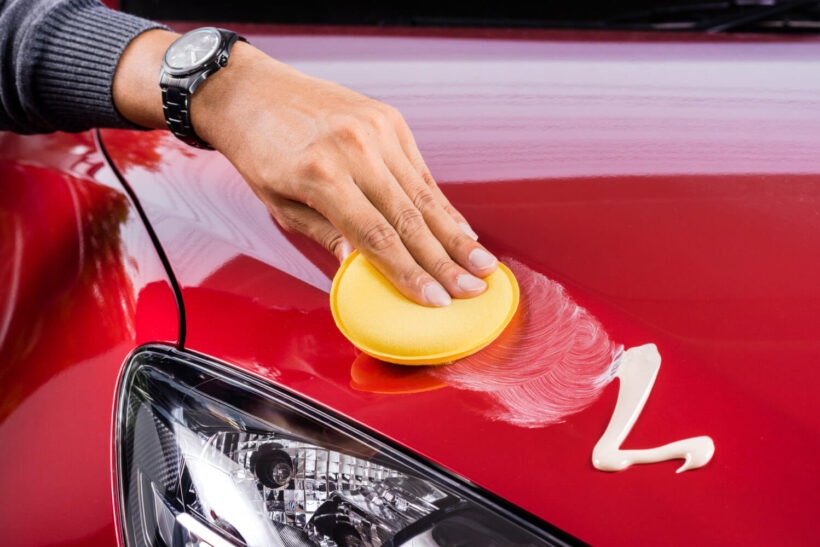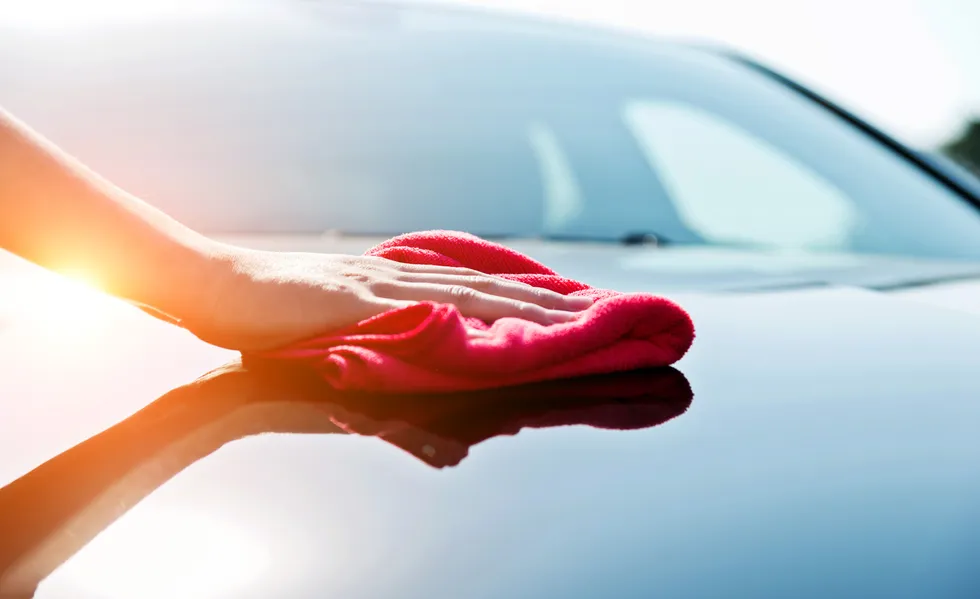We often feel intimidated when it comes to waxing our car—so much so that we put it off, or let a professional do the work. But with a few simple tips, you can do it by yourself and start to feel more confident about your own abilities and get better results in less time. Before you start, you can always find the right help in quality care products at autobarn.com.au.
First things first: before you even think about waxing, give your vehicle a thorough washing. This will remove all dirt and grime from the surface, so that the wax has a nice base to bond with. You might be tempted to just wash the sections you see as needing extra attention, but don’t skip any parts—you’ll find that it’s easier to spot spots on a clean surface.
Proper car maintenance is important, but it doesn’t have to be complicated. In fact, you can wax your car in just five minutes if you know what to do. Keep these 10 tips in mind the next time you’re polishing your ride:
1. Think small

You should be using a small amount of wax on your car at any given time—the size of a quarter should do the trick. If you apply too much at once, the wax will dry into a cloudy haze that’s tough to remove. This is especially important when you’re applying the wax by hand because it’s easy to spread too much around and create streaking.
2. Keep it moving
Don’t hold the cloth on one spot for too long—you want to constantly be moving it across your vehicle’s surface while applying pressure in a circular motion. That way, you’ll avoid creating spots where the wax dries and makes your car look patchy or uneven.
3. Apply even pressure
Don’t press so hard that you end up scratching the paint with the cloth, and don’t push so lightly that it doesn’t do anything at all. The key is finding an effective balance between those two extremes and applying firm but consistent pressure as you move around the car.
4. Choose the right car wax for you

There are many different kinds of car waxes out there, but if you want one that will be easy to use and give your car a polished look, then we suggest liquid or paste wax. This is because they’re easier to apply and remove than spray-on or gel waxes.
5. Clean your car with soap and water first
This will ensure you have a clean surface to apply the wax to. Use a soft sponge and car washing soap so you don’t scratch the paint on your car while cleaning it. You can also use a household cleaner like Windex to remove any dirt or dust before applying the wax.
6. Apply the car wax in small sections at a time
Apply small amounts of wax to each section as you go along so that it doesn’t dry out before being wiped off with a microfiber cloth or towel (you can also use an old cotton t-shirt). Make sure not to press too hard–just enough pressure so that the cloth can wipe away excess product from your vehicle’s surface area without scratching up its finish!
7. Use a clay bar to remove surface contaminants
Next, use a clay bar to remove contaminants like tar, tree sap and bugs from the surface of your vehicle’s paint before waxing it. Your local auto parts store will sell these bars made out of natural clay that’s been compressed into an easy-to-use shape. Simply rub the bar over any contaminated areas of your car’s finish using light pressure.
8. Don’t Use Too Much Wax

The first mistake people make when they’re waxing their cars is using too much wax. If you spread too much wax on the surface of your vehicle, it won’t be effective at protecting your car from the elements. Spread out small amounts of wax over large areas of your vehicle instead of spreading large amounts over small areas. This will ensure that there is enough wax on each part of your car so that it can protect it from weather damage.
If you use too much car wax on your vehicle, it can leave streaks and spots on the paint job. Using too little product won’t protect your paint as well as it could have if you had used more product correctly. Extra product also makes it harder for you to spread the wax across your vehicle’s surface evenly, which can lead to streaking problems later on down the line as well. To prevent this from happening, make sure that there’s about one inch of product left in the container before you start applying it to your car’s surface.
9. Use a Carnauba-Based Wax for Best Results
Carnauba is a type of plant that is native to Brazil and Venezuela. The wax produced from this plant is known as carnauba wax and has many benefits including being extremely hard wearing and long lasting. It also offers excellent protection against UV light damage, which is why it’s often used in commercial coatings like paint sealants and paints. Although there are other types of waxes available on the market, such as synthetic or polymer-based products, they tend to be less durable than those made with carnuba because they don’t contain nearly as much natural oils which help protect against UV damage.
10. Apply wax only when necessary
You don’t want to apply wax more than once or twice per year. Applying too much wax can cause it to build up on the paint, which can dull its appearance over time. You should also avoid applying wax on perfectly clean surfaces because it will not bond well with them.
Ask For Advice
One of the best ways to find out about a particular brand of car wax is by talking with someone who uses it regularly. If you have friends or family members who have been using the same car wax for months or years, ask them what they think about it and whether they’ve had any problems with it. Ask them if they know of any other brands that might work well with your paint job as well. This way you can get an honest opinion from someone who has experience with different products instead of just relying on what’s written on the label or what is advertised online or on television commercials.

